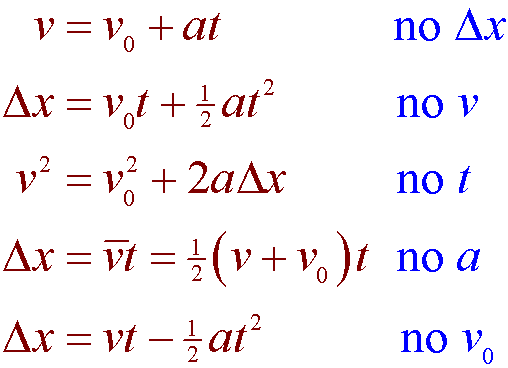Stunning The Equations Of Motion

Equations of motion are used to describe the velocity speed and direction as well as distance travelled by projectiles when they are launched or thrown.
The equations of motion. We have looked at describing motion in terms of words and graphs. The basis for all of kinetics is Newtons Second Law which relates forces and accelerations for a given body. 217 Equations of motion ESAHG In this section we will look at the third way to describe motion.
Inverse Dynamics starting from the motion of thebody determines the. The motion of an object can follow many different paths.
The equations of motion also known as kinematic equations are the equations that are used to describe the motion of a particle or object moving in 1D 2D or 3D space. Equations of motion relate the displacement of an object with its velocity acceleration and time. This lesson will perform calculations using the equations of motion for uniform acceleration.
There are three equations of motion that can be used to derive components such as displacement s velocity initial and final time t and acceleration a. Equations of motion can be derived in various ways but here we are going to derive them using the graphical method. In case of uniform acceleration there are three equations of motion which are also known as the laws of constant acceleration.
Consider the body moving in XY plane starts its motion from point P with initial velocity u u0 and reaches to point Q in time t with uniform acceleration a and final velocity v shown in figure below. Kinetics is the branch of dynamics that deals with the relationship between motion and the forces that cause that motion. V v0 at v 25 ms 20 ms2 30 s v 19 ms.
Equations of motion in physics are defined as equations that describe the behaviour of a physical system in terms of its motion as a function of time. In this section we examine equations that can be used to describe motion. Equations of motion for uniform acceleration.













